Purple carrots and horrifying toilets were key to making The Forgotten City's ancient Rome believable
How The Forgotten City used food as a springboard for the rest of its society.
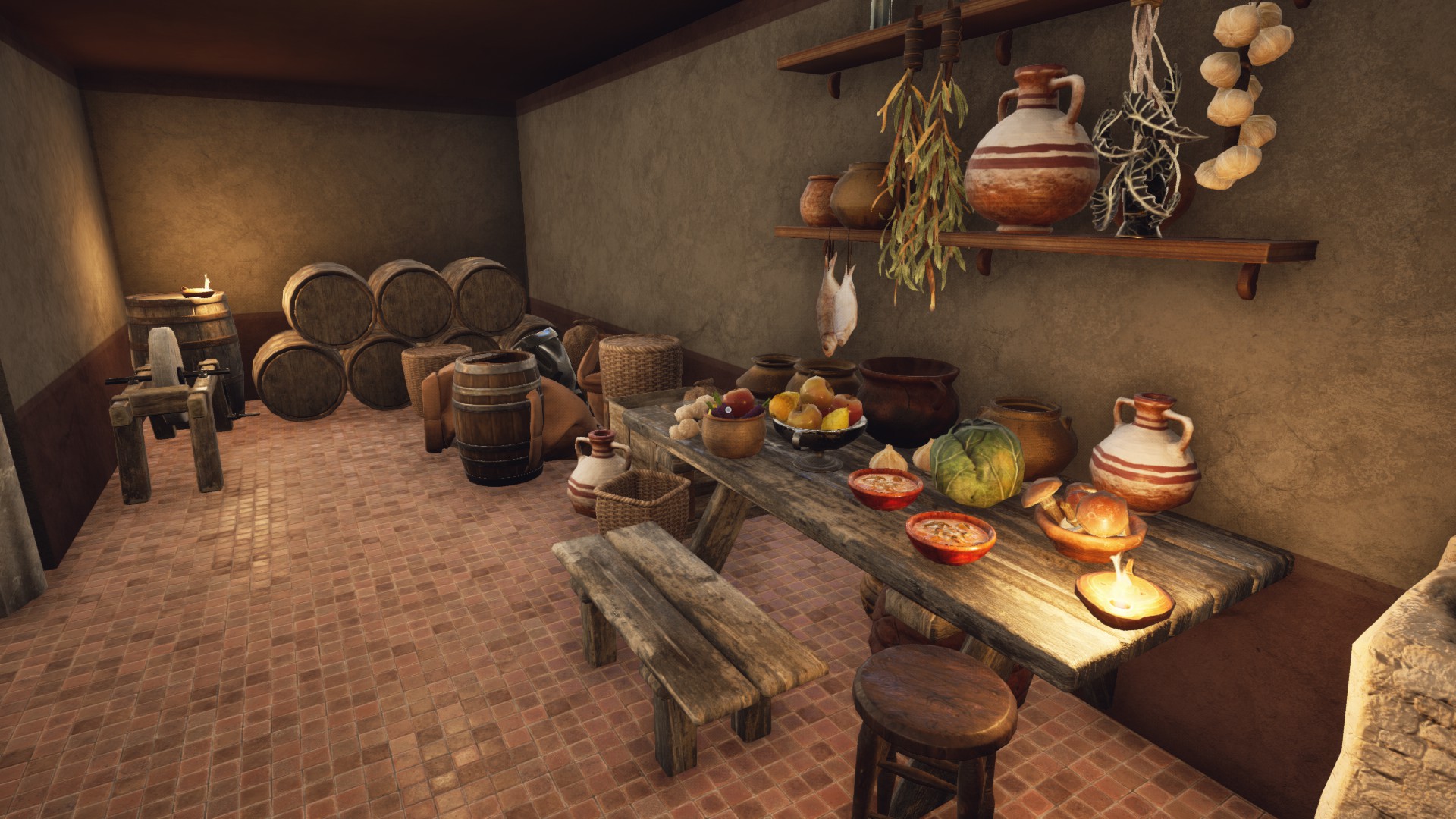
Exploring the dimly-lit slums of The Forgotten City, you might stumble across one citizen’s room filled with bottles upon bottles of garum—an ancient Roman fish sauce made from fermented fish guts that was basically like today’s ketchup. Some of us might remember 2013’s great "Sriracha-pocalypse" when people feared price hikes and shortages of every hipster’s favorite chili sauce; here in this subterranean ancient Roman city, cut off from the rest of the known world, perhaps this condiment hoarder is also preparing for the worst: a life with no garum.
To make sure that the world felt plausible and believable and livable, I had to establish a little ecosystem where food was able to be grown and distributed
It’s a quirky bit of insight into day-to-day living in ancient Roman society, using food as a universal way of worldbuilding and storytelling. Learning how the locals eat and drink is an easy way to learn the lay of the land, and it’s even more effective if you’re playing an RPG where you can actually imagine your character preparing or eating different things.
The Forgotten City first came to life in 2015 as an award-winning Skyrim expansion mod, which took solo developer Nick Pearce over 1,700 hours to create. It was a labor of love that players and critics praised for its writing and production, and is often considered one of the best Elder Scrolls story mods ever made. Under the banner of his new studio Modern Storyteller, Pearce has adapted The Forgotten City into a standalone game away from its origins in Tamriel. The premise is still the same: you unravel the secrets of a hidden city where if even one person sins, everyone dies.
In choosing a new setting, Pearce turned to a historical Roman novel that he’d been working on before he started modding. "I certainly don't consider myself an expert," he says. "I would call myself an enthusiast of ancient Roman history. And I know just enough to know how little I know. And that's why I eventually called in the big guns." The big gun in question is Dr. Phillip Matyszak, an Oxford scholar and author who penned Ancient Rome on Five Denarii a Day, a reference book which Pearce read while researching his novel. (While The Forgotten City is Dr. Matyszak’s first time working on a videogame, the good doctor is an avid wargamer, EVE Online player, and has logged around 2,000 hours in both Guild Wars and Guild Wars 2.)
The result is nothing short of gorgeous—the subterranean city is full of cultural trivia that appeals to casual players, amateur historians, and, for lack of a better term, conspiracy theorists sniffing for clues to the city’s origins and purpose.
"To make sure that the world felt plausible and believable and livable, I had to establish basically, a little ecosystem, where food was able to be grown and distributed," Pearce explains. "And as I built from that, I realized that food touches on just about every aspect of society. It's actually kind of a useful springboard, when you're planning a city for this sort of game, to have a think about realistically how people survive."
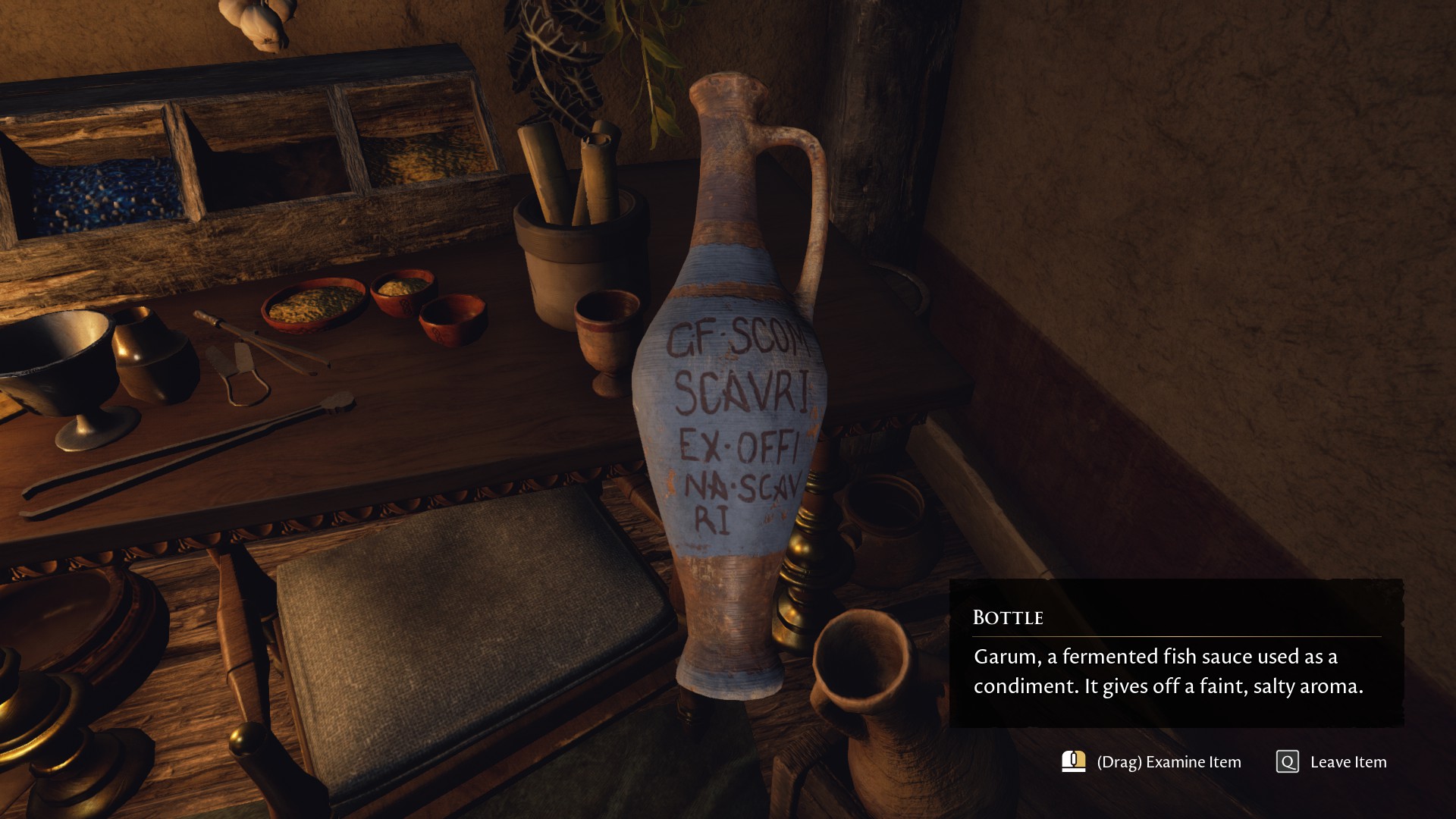


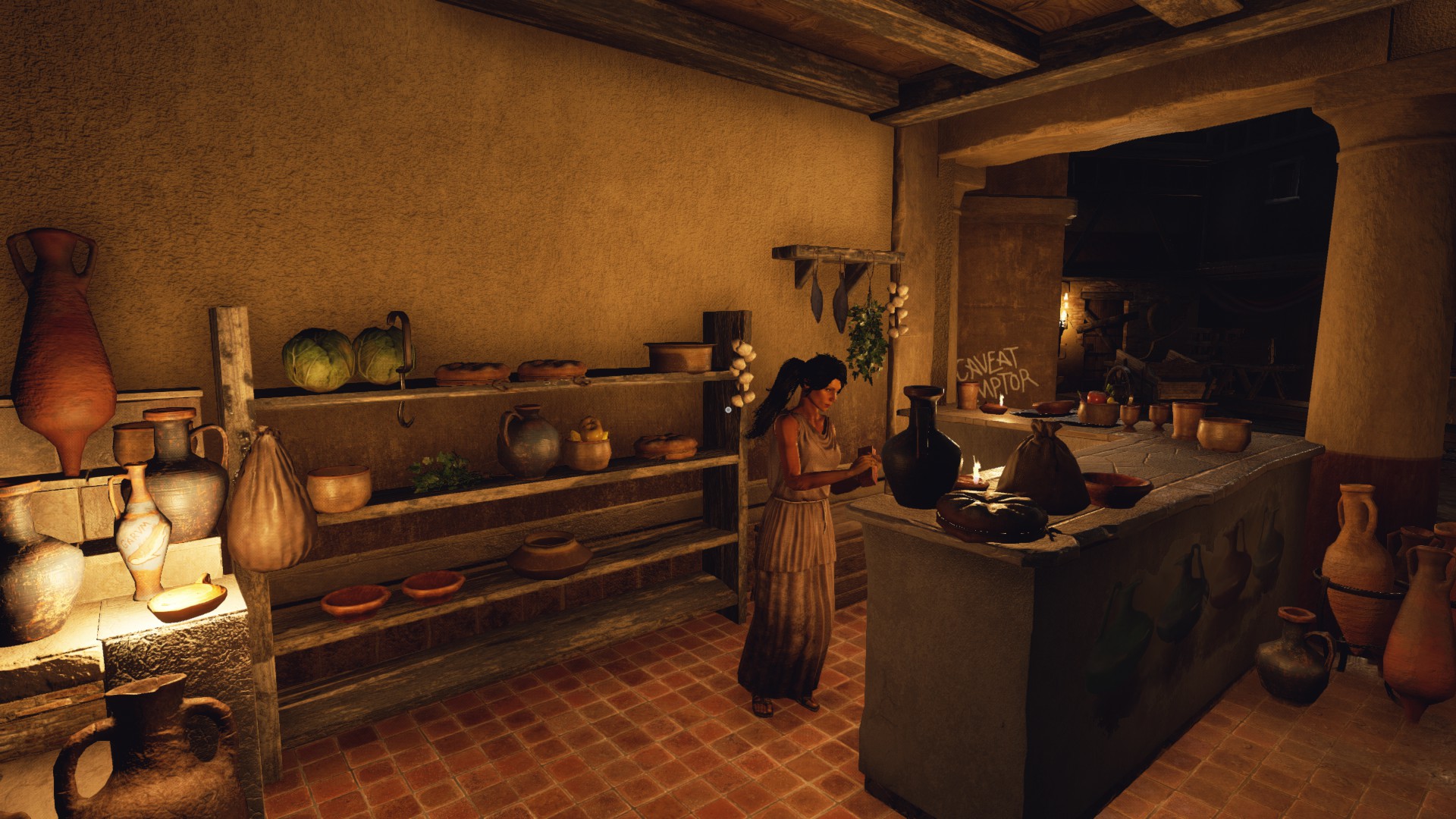
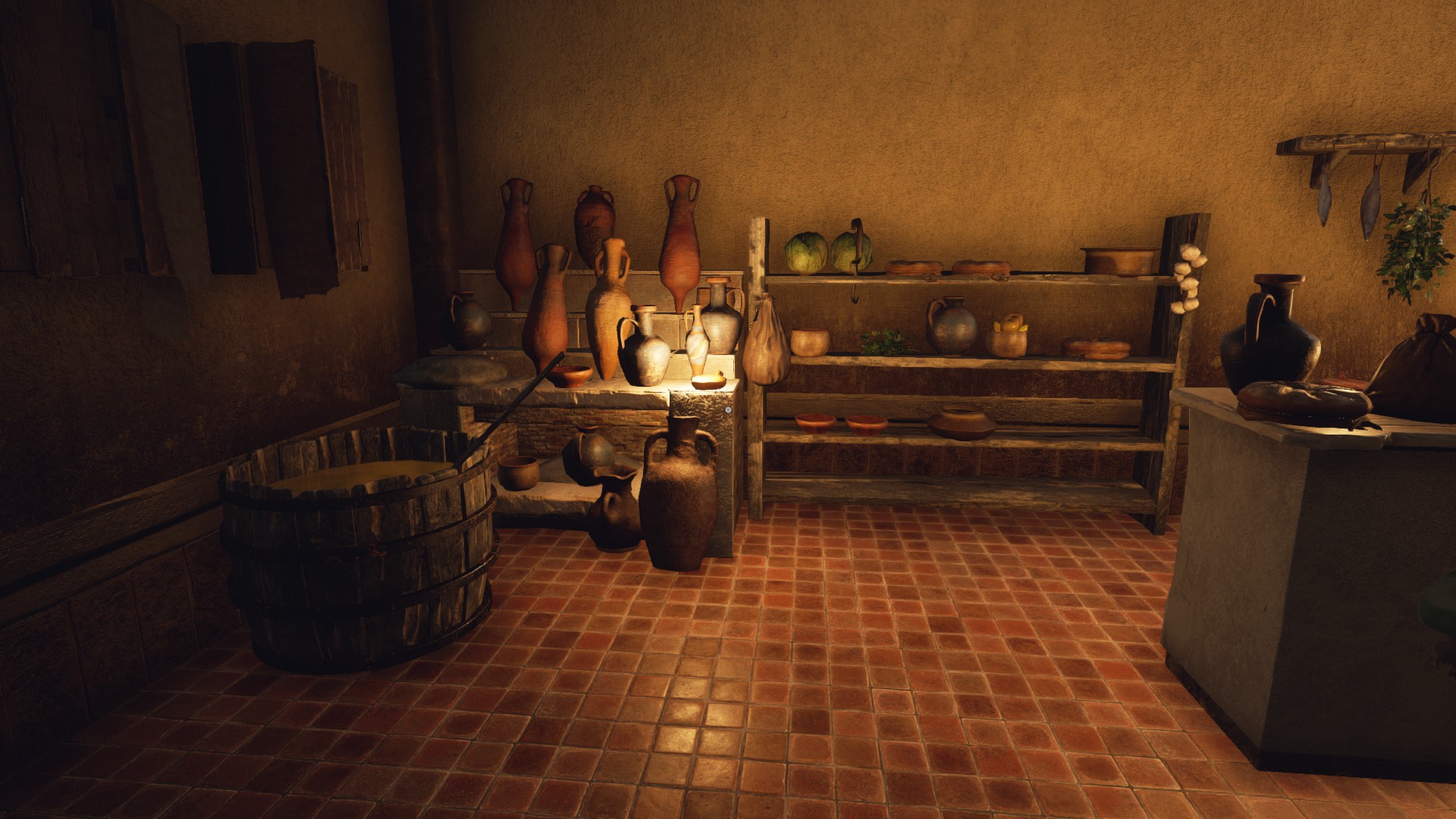
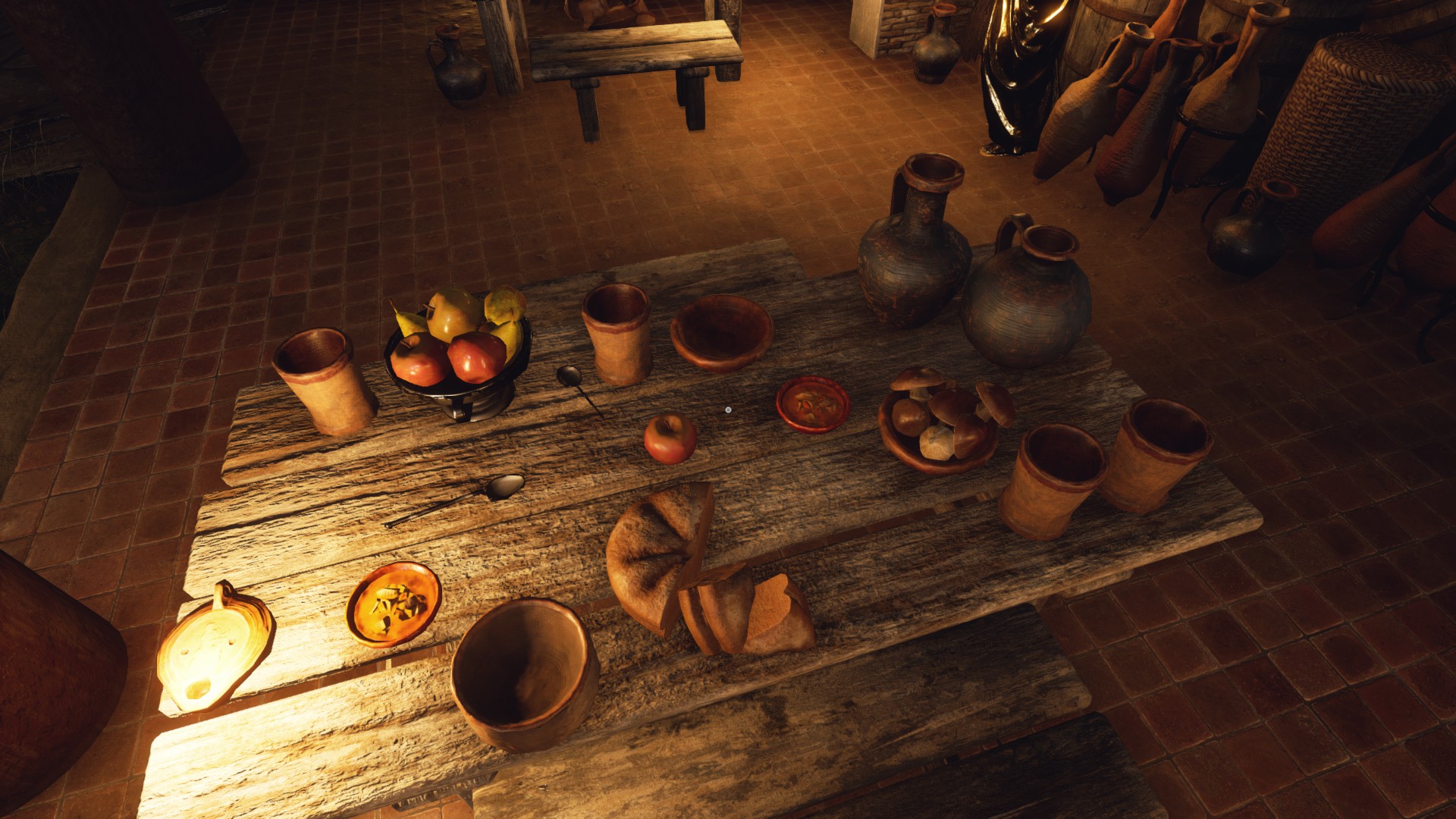
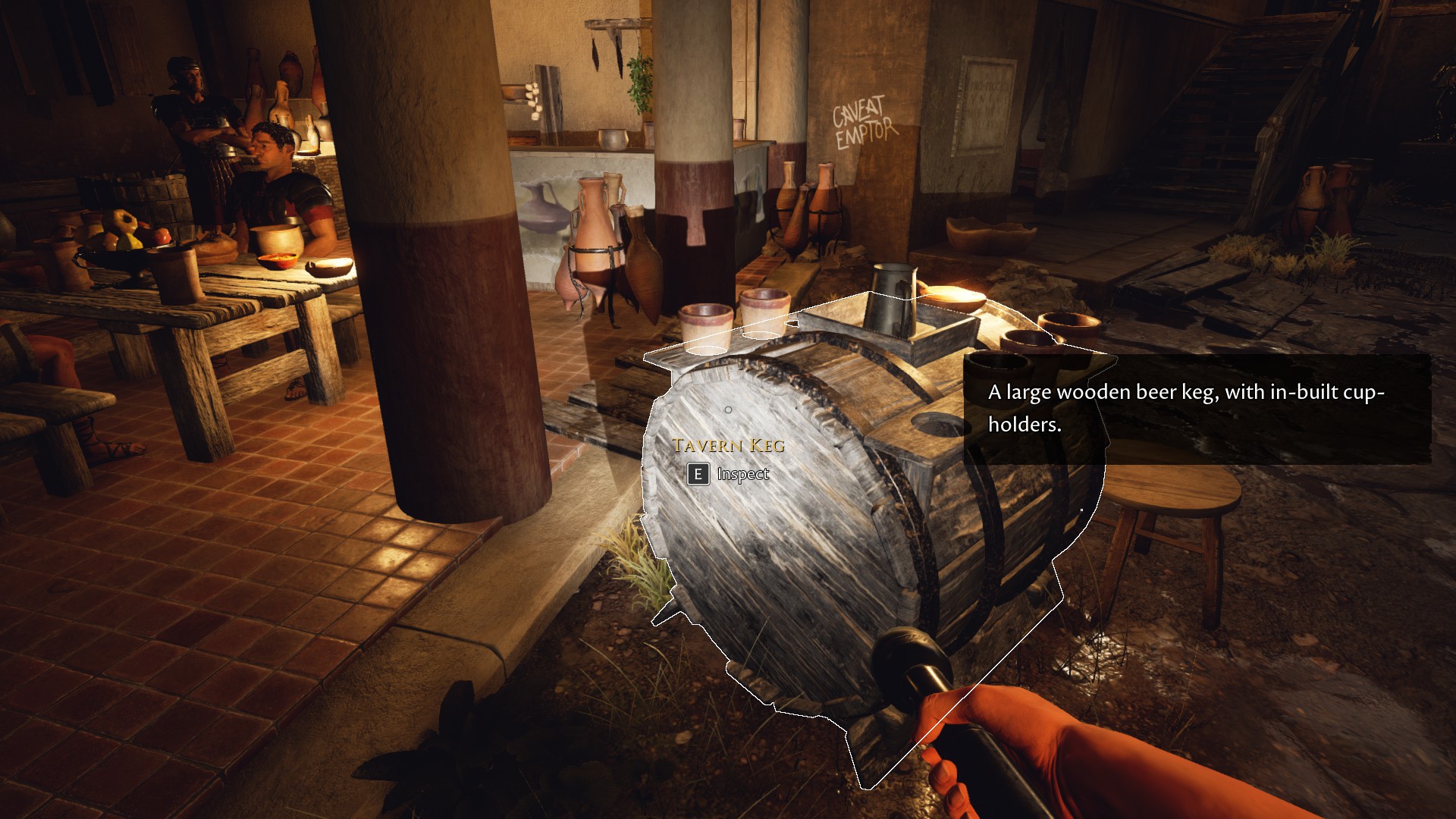
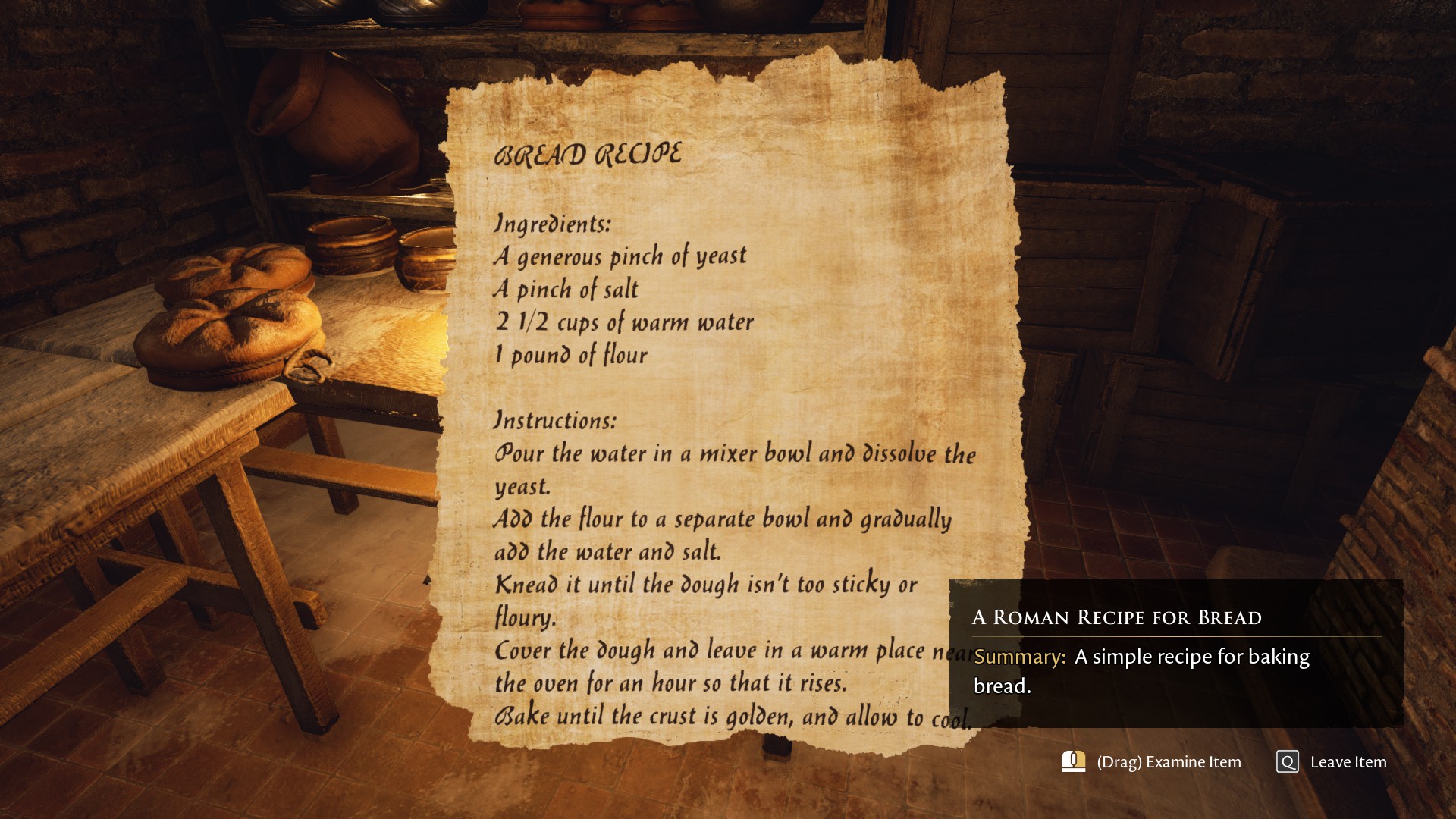
It seems like the inhabitants of the city aren’t just surviving. A glance at their taverns, kitchens, and private rooms makes it seem like they're thriving. The city is full of wheels of bread, purple carrots that predated our familiar orange ones, plump cabbages, and of course, garum. There’s even a farm plot with a black goat and a cheeky goose. With wheat, people can make bread—Pearce dug up an authentic Roman bread recipe for the game—which was traditionally baked in a soft mold, like cake, and tied with string to keep its shape. Each bread loaf is pre-divided into slices to be torn off and shared.
Keep up to date with the most important stories and the best deals, as picked by the PC Gamer team.
Beer wasn’t actually a huge deal in Rome, but thanks to The Forgotten City’s northern European natives, it makes a fun appearance in the form of a massive beer keg with built-in cupholders. "One of the things about beer is it's not like sitting down with a pint in the pub," says Dr. Matyszak. "One of the reasons that northern Europeans use beer is because it's a way of sterilizing water, so it's more like a way of just getting a drink and knowing it's not going to kill you." He also adds that historically, Romans in Vindolanda, an old fort along Hadrian’s Wall, even sent messages requesting more beer.
Pearce, in many ways the benevolent god of this secluded community, allowed his denizens to have beer because in the world of the game, they’ve all run out of wine. Romans also loved to play games over food and drink—you’ll notice a bunch of dice towers scattered around the city that were supposed to deter cheating. "There were various board games," says Dr. Matyszak, "but gambling in tabernas was generally forbidden since it tended to cause public disorder."
There’s also what happens to the food after you eat it. "The logical endpoint of having a system, a society that revolves around food, is that it has to go somewhere," says Pearce. "And so we've got a public toilet, which is modeled very closely on some photographs and illustrations… of how a communal toilet in ancient Rome looked." As expected, it’s the public bathroom from hell. It’s a large room filled with ancient toilets—not a partition or cubicle in sight—where you’re ostensibly supposed to sit and socialize while doing your business.

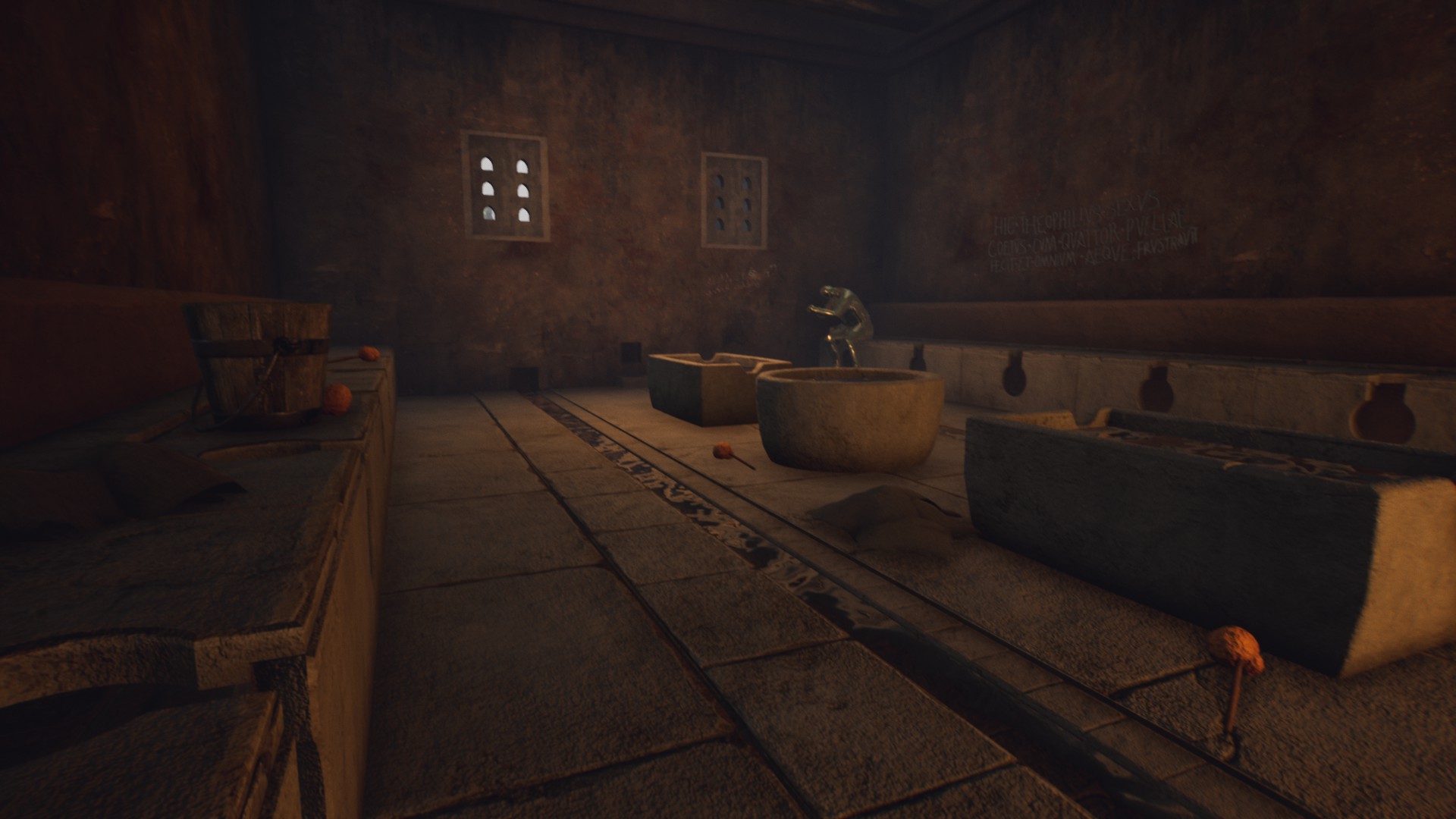
This nightmarish scenario is objectively horrifying to a modern player, but it gets even worse when you spot the xylospongium, a crude sponge on a stick that was used as a kind of shared toilet paper. "The Romans ate with both hands," says Dr. Matyszak. "So it's not like the Arab cultures where you have a food hand and a crap hand." Pearce adds that the sponge-stick’s functionality is possibly a contested point—some people believe that it was used as a cleaning tool for the toilets themselves.
You’ll also see bowls around the city filled with urine, which people used to wash their clothes. The ammonia in urine, according to Dr. Matyszak, helped break down sebum and dirt. "In a Roman city, there were actually urns strategically placed in street corners where gentlemen who needed to relieve themselves could quietly go… for the laundry," he says. "[Emperor] Vespasian used to try to tax these little urns that were put around the city. And until very recently in France, the word for a urinal was a vespasienne for that very reason."
In ancient Rome, everything was pretty much done in public except for sleeping. "So basically you had your bedroom and a wardrobe and if you were an aristocratic Roman bachelor, that's basically all you had," Dr. Matyszak explains. "You bathed outside, you played outside, you socialized outside, you went to the toilet outside, and you definitely ate outside because most Roman buildings were made out of wood, were highly flammable and landlords had very strong opinions about naked fires on the premises."

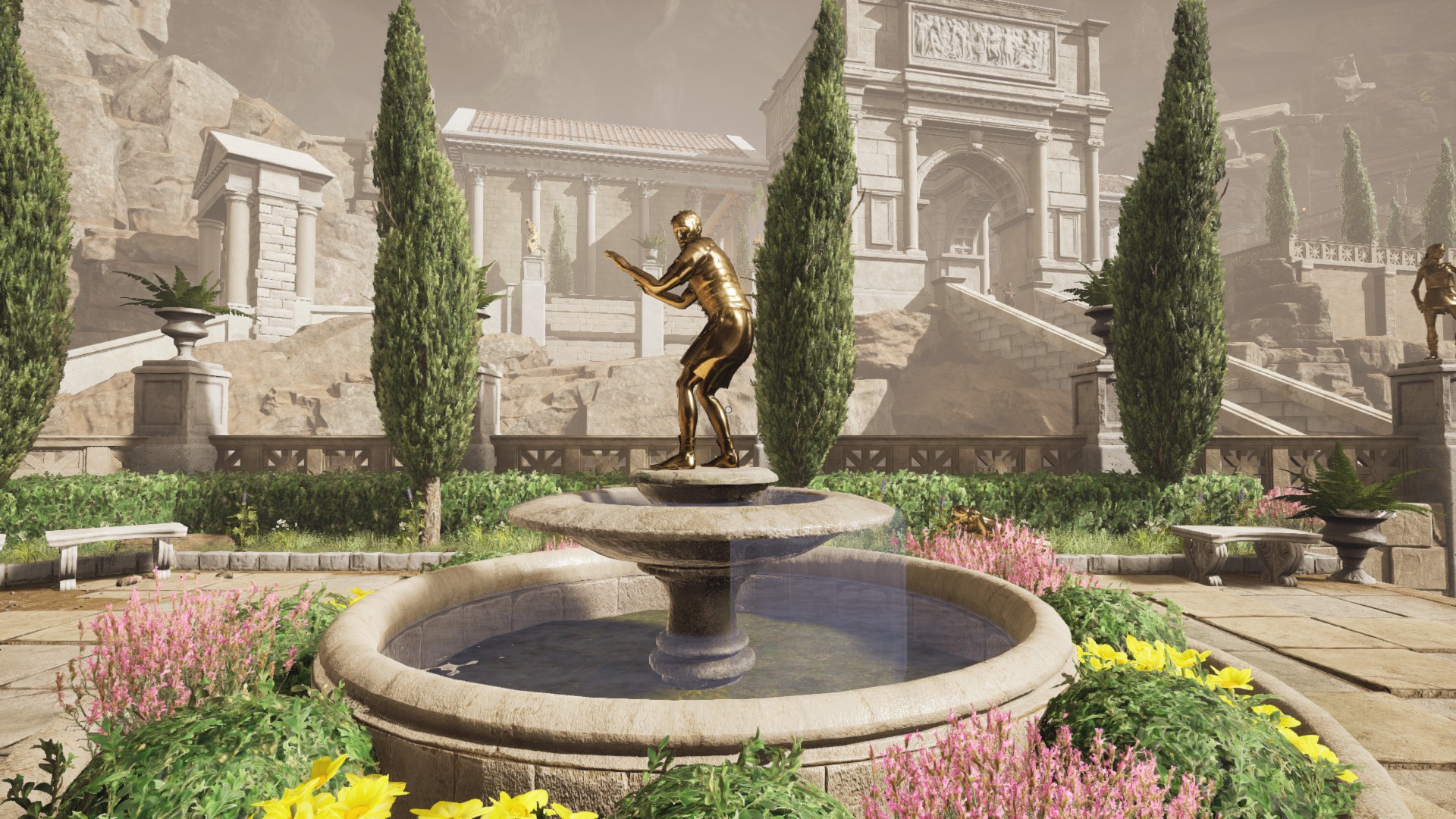
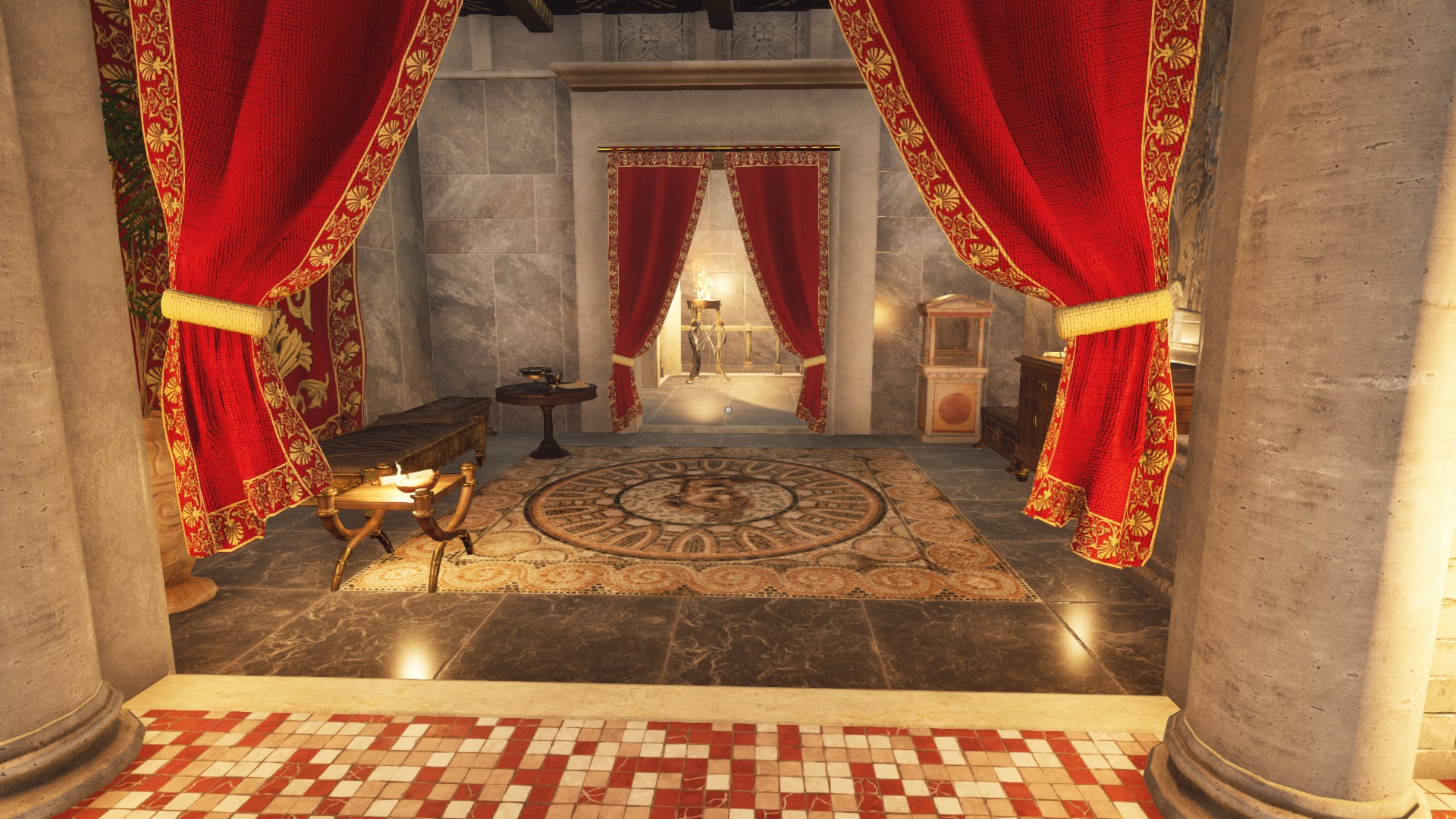
Traipsing around the patrician villas in The Forgotten City you can see small, windowless kitchens in owned properties. One of the mouseover text boxes illuminates just how smoky and hot it must get in there for unfortunate servants.
"In addition to the nice little decorative touches, [worldbuilding with food] also helps you to establish a division of labor," says Pearce, pointing to how the crops are farmed and prepared and distributed in the city. "Meanwhile, you've got these upper class patricians lounging around their villas not doing anything particularly useful. You've also got very different diets on show in the lower class common areas versus in the upper class areas. So it becomes this really useful way of illustrating that stark class difference, which existed."
But food remains a great unifier. It can be an excuse to throw dice, a popular pastime for Emperor Augustus, whom Dr. Matyszak says wasted entire afternoons on it. It let the Romans indulge in the empire’s favorite fish sauce. And food opens the door to something beloved by humanity across the ages: Humor based on bodily functions.
"You should try reading the ancient Roman, Cato the Censor, on cabbages… it's an example of the Roman sense of humor," he says. "He says things like, if you want a healthy baby, bathe it every day in the urine of a man who eats nothing but cabbage. It's a literal example of a Roman piss-take."

Alexis Ong is a freelance culture journalist based in Singapore, mostly focused on games, science fiction, weird tech, and internet culture. For PC Gamer Alexis has flexed her skills in internet archeology by profiling the original streamer and taking us back to 1997's groundbreaking all-women Quake tournament. When she can get away with it she spends her days writing about FMV games and point-and-click adventures, somehow ranking every single Sierra adventure and living to tell the tale.
In past lives Alexis has been a music journalist, a West Hollywood gym owner, and a professional TV watcher. You can find her work on other sites including The Verge, The Washington Post, Eurogamer and Tor.

